Gennaro Cuofano's Blog, page 180
December 13, 2020
Top Tech Jobs To Look At In 2021
With the acceleration of digitalization globally, as the pandemic hit the world in 2020, companies resistant to it had to adapt quickly; this made jobs that were already critical to digital transformation even more required.
Full Stack Developers
With the web which is further scaling to penetrate most of the world’s population and to get online also small businesses, the necessity for developers that can manage multiple aspects, that go from the UI, back-end and applications side, can be critical to building tools successfully and web apps that help businesses grow.
 There are three segments of web development and design. One is dealing with the user interface or what the customer sees. Front End development is responsible for the crucial elements that make up the presentation of the page. The next is Back End, which handles the processes involved in the web page. It deals with information validation, database management, as well as transactions. As businesses continue to grow, the third segment emerged to accommodate their increasing needs and lucrative goals. Building applications from end-to-end is what makes a full stack developer. It is a more versatile role that is considered the Jack of All Trades.
There are three segments of web development and design. One is dealing with the user interface or what the customer sees. Front End development is responsible for the crucial elements that make up the presentation of the page. The next is Back End, which handles the processes involved in the web page. It deals with information validation, database management, as well as transactions. As businesses continue to grow, the third segment emerged to accommodate their increasing needs and lucrative goals. Building applications from end-to-end is what makes a full stack developer. It is a more versatile role that is considered the Jack of All Trades.Cybersecurity Experts
The increased traffic on the web has also resulted in more and more attacks, and cybersecurity has become increasingly important. In that respect, cybersecurity experts’ demand is more than ever.
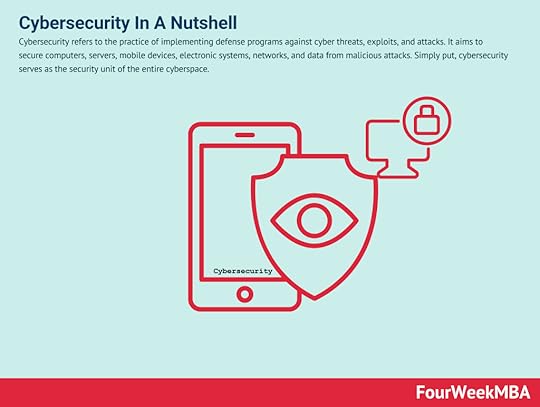 Cybersecurity refers to the practice of implementing defense programs against cyber threats, exploits, and attacks. It aims to secure computers, servers, mobile devices, electronic systems, networks, and data from malicious attacks. Simply put, cybersecurity serves as the security unit of the entire cyberspace.
Cybersecurity refers to the practice of implementing defense programs against cyber threats, exploits, and attacks. It aims to secure computers, servers, mobile devices, electronic systems, networks, and data from malicious attacks. Simply put, cybersecurity serves as the security unit of the entire cyberspace.Blockchain Developers
With the Blockchain that is finding many interesting applications in several industries, developers able to build apps on top of the various Blockchains protocols spurred in the last decade are highly in demand. With the increase of decentralized applications, this request has exploded.
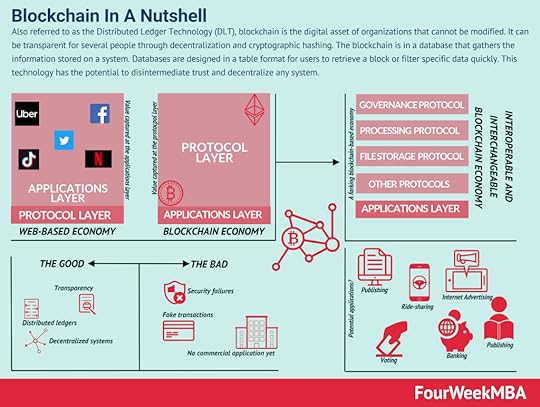 Also referred to as the Distributed Ledger Technology (DLT), blockchain is the digital asset of organizations that cannot be modified. It can be transparent for several people through decentralization and cryptographic hashing. The blockchain is in a database that gathers the information stored on a system. Databases are designed in a table format for users to retrieve a block or filter specific data quickly. This technology has the potential to disintermediate trust and decentralize any system.
Also referred to as the Distributed Ledger Technology (DLT), blockchain is the digital asset of organizations that cannot be modified. It can be transparent for several people through decentralization and cryptographic hashing. The blockchain is in a database that gathers the information stored on a system. Databases are designed in a table format for users to retrieve a block or filter specific data quickly. This technology has the potential to disintermediate trust and decentralize any system. Cloud Developers
The new software paradigm, hosted on the cloud rather than on the client-server and on-premise, has determined an explosion of apps, platforms, and infrastructures built on top of the cloud. Thus, making developers for the cloud in high demand.
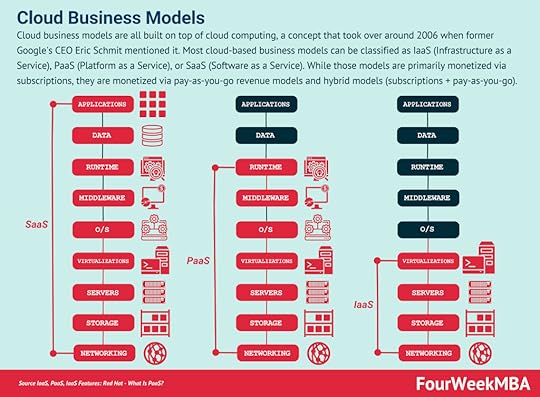 Cloud business models are all built on top of cloud computing, a concept that took over around 2006 when former Google’s CEO Eric Schmit mentioned it. Most cloud-based business models can be classified as IaaS (Infrastructure as a Service), PaaS (Platform as a Service), or SaaS (Software as a Service). While those models are primarily monetized via subscriptions, they are monetized via pay-as-you-go revenue models and hybrid models (subscriptions + pay-as-you-go).
Cloud business models are all built on top of cloud computing, a concept that took over around 2006 when former Google’s CEO Eric Schmit mentioned it. Most cloud-based business models can be classified as IaaS (Infrastructure as a Service), PaaS (Platform as a Service), or SaaS (Software as a Service). While those models are primarily monetized via subscriptions, they are monetized via pay-as-you-go revenue models and hybrid models (subscriptions + pay-as-you-go).AI/ML Developers
The explosion of the cloud has made computing power much much cheaper, thus it turned viable AI/ML applications that usually (at least at this point) necessitates a massive amount of data to run. In this context, AI developers have become in greater demand!
 Generalized AI consists of devices or systems that can handle all sorts of tasks on their own. The extension of generalized AI eventually led to the development of Machine learning. As an extension to AI, Machine Learning (ML) analyzes a series of computer algorithms to create a program that automates actions. Without explicitly programming actions, systems can learn and improve the overall experience. It explores large sets of data to find common patterns and formulate analytical models through learning.
Generalized AI consists of devices or systems that can handle all sorts of tasks on their own. The extension of generalized AI eventually led to the development of Machine learning. As an extension to AI, Machine Learning (ML) analyzes a series of computer algorithms to create a program that automates actions. Without explicitly programming actions, systems can learn and improve the overall experience. It explores large sets of data to find common patterns and formulate analytical models through learning.DevOps & DevSecOps Engineers
With the other trends, DevOps and DevSecOps are highly requested, as this enables companies to achieve continuous operations at scale.
 DevOps refers to a series of practices performed to perform automated software development processes. It is a conjugation of the term “development” and “operations” to emphasize how functions integrate across IT teams. DevOps strategies promote seamless building, testing, and deployment of products. It aims to bridge a gap between development and operations teams to streamline the development altogether.
DevOps refers to a series of practices performed to perform automated software development processes. It is a conjugation of the term “development” and “operations” to emphasize how functions integrate across IT teams. DevOps strategies promote seamless building, testing, and deployment of products. It aims to bridge a gap between development and operations teams to streamline the development altogether.Business Engineers
In this context of increasing complexity, technology needs to be integrated into a whole business model, business people with acumen on new technologies and integrating them within organizations.
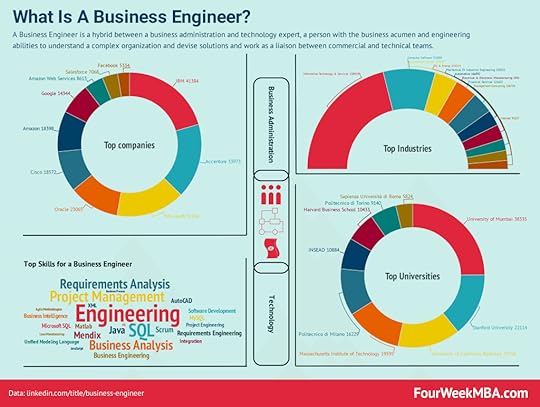 A Business Engineer is a hybrid between a business administration and technology expert, a person with the business acumen and engineering abilities to understand a complex organization and devise solutions and work as a liaison between commercial and technical teams.
A Business Engineer is a hybrid between a business administration and technology expert, a person with the business acumen and engineering abilities to understand a complex organization and devise solutions and work as a liaison between commercial and technical teams.Business Designers
At the same rate, business designers, able to integrate and fit technology within the value proposition and help organizations transition their business models, are also in high demand.
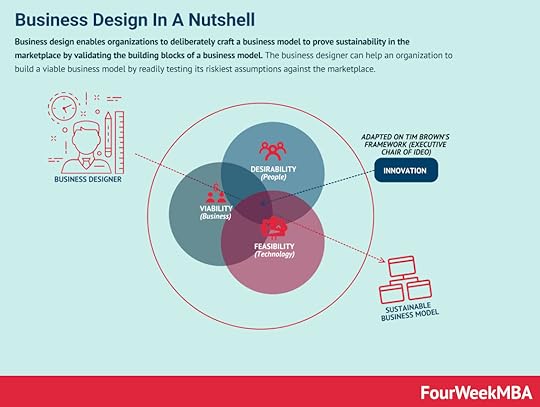 Business design enables organizations to deliberately craft a business model to prove sustainability in the marketplace by validating the building blocks of a business model. The business designer can help an organization to build a viable business model by readily testing its riskiest assumptions against the marketplace.
Business design enables organizations to deliberately craft a business model to prove sustainability in the marketplace by validating the building blocks of a business model. The business designer can help an organization to build a viable business model by readily testing its riskiest assumptions against the marketplace.Read Next: Cloud Business Models, IaaS, PaaS, SaaS, AI Economy, C3.ai Business Model, Enterprise AI Business Model, Business Designer, Business Engineering, DevOps, DevSecOps.
Main Guides:
Business ModelsBusiness StrategyMarketing StrategyBusiness Model InnovationPlatform Business ModelsNetwork Effects In A NutshellDigital Business Models
The post Top Tech Jobs To Look At In 2021 appeared first on FourWeekMBA.
December 12, 2020
Full Stack Development In A Nutshell & Why It Matters In Business
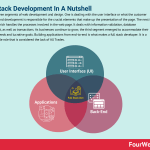
There are three segments of web development and design. One is dealing with the user interface or what the customer sees. Front End development is responsible for the crucial elements that make up the presentation of the page. The next is Back End, which handles the processes involved in the web page. It deals with information validation, database management, as well as transactions. As businesses continue to grow, the third segment emerged to accommodate their increasing needs and lucrative goals. Building applications from end-to-end is what makes a full stack developer. It is a more versatile role that is considered the Jack of All Trades.
Web Development: Front-End, Back-End, Full Stack
As the web progresses, it requires an expert that is knowledgeable with comprehensive, cutting-edge technology. There are also complex aspects that need someone with more specialized capabilities.
For this reason, web development divides into three main categories:
Front End Development
Front End Developers manage the customer-facing aspects of a website or applications. From the key elements, functionalities, placement, themes, and overall user interface, they are responsible. Simply put, it is the responsibility of front end developers to make informed decisions on creating a web page immersive, engaging, and functional.
Back End Development
On the back end of web development, it involves the supporting aspects of the things that users see on the webpage. Ultimately, back-end developers are responsible for establishing the foundation of the website or the application. They manage both the infrastructure and database, which are integral to navigate around webpages seamlessly.
Full Stack Development
Full-stack development is technically a hybrid of front end and back end web development. Businesses take advantage of their versatility to manage everything in between. From a web stack, a mobile stack, or a native application stack, these developers are the ones responsible.
What are the responsibilities of a Full Stack Developer?
As previously mentioned, full-stack development involves both ends (front end and back end) of a website or application. This duality indicates that full-stack web developers or engineers take on projects surrounding databases and building user-facing websites. There are also times when they need to talk to clients to develop a map of the project phases.
To become an effective, competent full-stack developer, you must have the following skills:
Extensive knowledge in one or more back-end programming languages, especially HTML, CSS, or JavaScript.A growing number of full-stack developers expand their knowledge and even specialize in complex programming languages like Ruby or PHP, or Python.Since full-stack developers also deal with clients, businesses look for those with experience in project management.Full-stack must also be proficient in visualization, web design, and user experience development for the front end development skills.
To complete your stack, it is integral that you know the front end and back end development. Although there is a fine line between these two web development segments, employers would prefer someone who can excel on all the parts of the site. They utilize their end-to-end web development skills to make the best decisions for the job. Additionally, full-stack developers are the ones who often oversee the development process. Since they know all-around the process, they can contribute valuable insight into either end.
Contrary to what most people perceive, full-stack developers are not solely responsible for developing the code. Instead of performing code, they spend most of their time in either the front or back end code of a webpage. Yet, developers are often experts in coding across the entire stack. In this way, full-stack developers can dive into either the front end or back end if necessary. There are full stack developers that formulate the code for an entire website or application. However, they are often working on a project basis or freelance.
To give you an idea, here are the primary responsibilities of a full stack developer:
Manage the development of a website or application.Formulate the code and functionalities of the programs.Troubleshoot issues, and develop testing methods to track the progress of the website or app.Work with animations, graphics, and design of the website or application.Coordination with teams in both front-end and back-end development.
Overall, full-stack developers have a knack for developing the infrastructure, database, and user interface of an app or website. They should be able to leverage cutting edge technology to manage either end of web development. Proficiency in multiple programming languages like HTML, JavaScript, CSS, PHP, Angular, Ruby, MySQL, Node, MongoDB, Apache, etc., is also recommended.
How Full Stack Developers Contribute To Businesses
Full-stack development is integral for digital entrepreneurs to progress towards growth. Developers curate the functionalities establishing the infrastructure, test for glitches across the web, and manage the project in general. It is an extremely rigorous job that requires them to complete the application from scratch. Furthermore, they should be able to grasp the different layers involved in web development.
Here are the advantages of full-stack developers to entrepreneurs:
Project Management
Full-stack developers can streamline web development, managing every aspect of the project.
It is essential for entrepreneurs that full-stack developers have experience in project management. The executive and management skills are vital to working on multiple layers of web development. They can help businesses resolve issues before it arises, considering that they oversee end-to-end development. It also allowed them to come up with innovative solutions using tools from either the front-end or back-end. Lastly, their clear understanding of the entirety of web development will enable them to reduce the project’s total costs. This reduction is helpful for small businesses that have a restricted budget.
Extensive Technical Knowledge
Full-stack developers have vast potential. They often have extensive technical knowledge that comes in handy throughout the project. It is in the best interest of digital entrepreneurs to hire full-stack developers that perform better than an individual front-end or back-end developer.
Reduce Operational Costs
Full-stack development deals with all aspects of the project, from the front end to the back end. It eliminates the need to form a team of experts and further reduces the project’s operational costs. Full-stack developers can handle end-to-end development single-handedly if needed. If you have a limited budget, hiring a full-stack developer is a practical solution.
Streamline Web Development
As full-stack developers clearly understand the technologies, tools, and techniques applicable to end-to-end development, they can streamline the project. Instead of spending time planning the project, teams can start right away. The time spent collaborating with the team can also be eliminated if you let full-stack developers perform all the work.
Time is precious for any business. The more time lost when the project gets delayed means more missed opportunities. Full-stack developers offer feasible solutions in building applications or developing a website. Instead of relying on a single developer for the front end and back end development, you can save time and money when dealing with a one-person team.
Increase Productivity
Full-stack developers can coordinate across the front end and back end developers to unify their project plan. They can also work in a collaborative environment overseeing either side of the web development, which increases the team’s productivity.
Read Next: Cloud Business Models, IaaS, PaaS, SaaS, AI Economy, C3.ai Business Model, Enterprise AI Business Model.
Main Guides:
Business ModelsBusiness StrategyMarketing StrategyBusiness Model InnovationPlatform Business ModelsNetwork Effects In A NutshellDigital Business Models
The post Full Stack Development In A Nutshell & Why It Matters In Business appeared first on FourWeekMBA.
Cybersecurity In A Nutshell And Why It Matters In Business
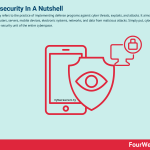
Cybersecurity refers to the practice of implementing defense programs against cyber threats, exploits, and attacks. It aims to secure computers, servers, mobile devices, electronic systems, networks, and data from malicious attacks. Simply put, cybersecurity serves as the security unit of the entire cyberspace.
Defining Cybersecurity
The recent advancement of technologies has brought an immense need for more refined programs against cyber threats. For a single user alone, cyber-attacks can jeopardize one’s identity or even become subject to extortion. These threats should be regarded seriously, since it affects you and the ones you love.
As for businesses, once their data is compromised, all their hard work goes down the drain. Depending on the nature of the threat, your reputation could also be jeopardized, making it even more difficult for you to recover.
For these reasons, a highly secured infrastructure, including power plants, hospitals, software, and systems have to be protected. Furthermore, cybersecurity plays a fundamental role in keeping society in harmony.
Servers are considered secured if multiple layers of security protocols get spread out across the systems. Such protocol also includes computers, networks, data, and programs surrounding a single server. When maintaining an organization’s safety, true cybersecurity is a triad between its people, technology, and methodology. A reliable defense mechanism should complement one another to be able to shield potential cyber-attacks. This unification is also helpful in augmenting uniform security operation functions.
Why is Cybersecurity Important?
Every organization much observe a comprehensive cybersecurity protocol to resolve issues before they get out of hand. Cyber threats continue to rise globally, making it imperative to stay on the lookout for potential danger. Reports even revealed that there were 7.9 billion records breached during the first nine months of 2019 alone. This figure continues to rise as technological advancements continue to progress throughout the world.
According to the recent data, businesses in the healthcare, retail, and public sectors are likely victims of such cyber exploitations. These malicious attacks often stem from individuals looking to collect financial and medical data. The information collected is then targeted for customer data, corporate espionage, or customer attacks.
Demand in Cybersecurity
The increasing cyber threats against organizations has led entrepreneurs to look for ways to protect themselves from attackers. Governments all over the world also took notice and established methods to help businesses implement cyber-security practices. For example, the US National Institute of Standards and Technology (NIST) introduced itsown cybersecurity framework. It is their goal to fight against the proliferation of malicious code and detect threats early on. Through routine monitoring performed in real-time, all electronic resources get tracked at all times.
As a result, the labor market expected demand for technical cybersecurity skills. The findings from the US Bureau of Labor Statistics show that there can be a 32% growth in cybersecurity-related roles towards 2028. Technological advancements, data, and privacy concerns are some of the issues that can only be resolved by cybersecurity specialists and experts.
Cybersecurity experts play a huge role when it comes to cyber law, data protection compliance to legislation. Apart from gaining a deep understanding of cybersecurity technology, they are well-informed of the policies mandated by law. Thus, it is their responsibility to look for ways to organize data processes, ensure protection, and maintain compliance.
How Businesses Benefit From Cybersecurity
Although technology brings us countless opportunities to make our lives easier, the constant connectivity with the digital world brings us closer to many vulnerabilities. Both businesses and their customers immerse themselves with faster, smarter, and more efficient technologies. From smartphones, applications, home appliances to automotive vehicles, there can be cyber threats unless we are heavily secured.
Emerging businesses relatively new in the industry have also overlooked carrying out property security measures against cyber threats. As a result, the pioneering enterprises the prioritize cybersecurity maintain the position of leaders. It is important that up, and coming entrepreneurs understand that establishing a good product is not enough. To become successful, you have to withstand the vulnerabilities, risks, and dangers of launching your brand. Furthermore, enterprises, whether big or small, must recognize the importance of cybersecurity. These protection layers will always come through during hacks, abuse, exploitation of private data, and a risk-laden future.
Build Your Reputation as a Brand
Apart from launching the product that will lead your business to success, you have to prepare for the potential risks that come with it. There might be substantial costs for implementing cybersecurity frameworks, but it offers numerous benefits. When your customers know that your website is safe, they won’t hesitate to drive your brand’s traffic. Think about the conversion opportunities that you may lose if your target market found your page unsafe. Research reveals that approximately 40% of online shoppers won’t make a purchase soon after they realize your website is not secured. This finding should not be a surprise, now that more consumers are well-informed about data privacy and security.
Safeguard Sensitive Data
The most apparent advantage of cybersecurity is the safeguard of your sensitive data. This safeguard is especially crucial for organizations that manage a large set of data that involves private customer information. Once they are leaked, the business and their customers are in danger.
Improve SEO Rankings
If you are just starting with your business, SEO can help increase your brand awareness. Search Engine Optimization determines how your webpage ranks within search engines. The more you appear on relevant searches, the more people can discover your business. As the pillar of digital marketing, organizations ensure that their website complies with SEO standards. It provides companies with organic traffic as well as leads opportunities.
Popular search engines like Google prioritize quality user experience when formulating rankings of landing pages. After all, their reputation can be on the line if they lure searchers into untrusted websites that offer irrelevant content.
Moreover, they reinforce cybersecurity through the HyperText Transfer Protocol Secure or HTTPS. One of the primary requirements of search engines in SEO rankings is to require websites to utilize HTTPS. HTTPS provides sufficient encryption on confidential information like credit card numbers, passwords, and usernames while they are processed on a site. For websites with no HTTPS, the browser would promptly warn the users of the risks of disclosing personal information.
Reduce Downtime
A vital benefit of cybersecurity is minimizing the downtime of your website. Any business would prefer to reduce as much down time as possible to prevent any losses. The tiniest amount of time lost trying to recover from cyber attacks is equivalent to profit missed.
Business websites are commonly affected by a Distributed Denial of Service or DDoS attacks. It is when a hacker would leverage a network of infected systems to spam servers with malicious traffic. As a result, organic traffic will be denied access to the website affected. Presently, cybersecurity practices offer DDoS attack mitigation to prevent such events. Experts can also implement a web application firewall to prevent these types of cyber threats.
Read Next: Cloud Business Models, IaaS, PaaS, SaaS, AI Economy, C3.ai Business Model, Enterprise AI Business Model.
Main Guides:
Business ModelsBusiness StrategyMarketing StrategyBusiness Model InnovationPlatform Business ModelsNetwork Effects In A NutshellDigital Business Models
The post Cybersecurity In A Nutshell And Why It Matters In Business appeared first on FourWeekMBA.
Cloud Computing And Why It Matters In Business

Establishing a robust infrastructure is the cornerstone of cloud computing. It often accounts for a third of the total amount spent on IT in a majority of businesses. Instead of taking computer workloads through the internal IT team, this traditional approach seemed to be long gone. Modern industries that embrace digital transformation with open arms gradually transfer systems into the cloud. Whether the information is on a private or public cloud, it offers increased security and safety against cyber threats. The result of increased cloud usage opens doors for cloud computing services provided by vendors and enterprises.
What is Cloud Computing?
Cloud delivery accounts for streamlining the delivery of services through the internet. When data gets stored in cloud software, servers in a comprehensive database secure it. IT professionals prefer data storage in the cloud instead of proprietary hard drives and local storage devices. Cloud-storage is more convenient, allowing users to store and access files to a remote database. Almost everyone in the world has access to the internet. Thus, you can run data and software through the cloud as long as you have an electronic device and internet connectivity.
Businesses are slowly adopting cloud computing into their existing framework for several reasons. Cloud offers convenience, speed, security, and cost-savings. Not only can it provide efficiency but it also increases the overall productivity of businesses.
How Does Cloud Computing Work?
As previously mentioned, cloud computing is used in both public and private clouds. Both public and private cloud services are networks that supply hosted services. Storing data in the public cloud means that you can acquire its services for free. In contrast, private cloud services require a fee that can only be accessed by many people.
In general, cloud computing features vast services, including the following:
Consumer Services (cloud back-up for data on smartphones, desktop, and laptops)Hosted services to run several applications in the cloud (often used by companies)
A growing number of applications and software utilize cloud computing to offer innovative solutions and quality services. Extensive video streaming services like Hulu, Netflix, Disney+, and Amazon slowly transition to a subscription model. Through cloud computing, they can offer their applications as services instead of a standalone product. It may increase the costs for the users, but these often make up for the constant improvements made.
Types of Cloud Computing
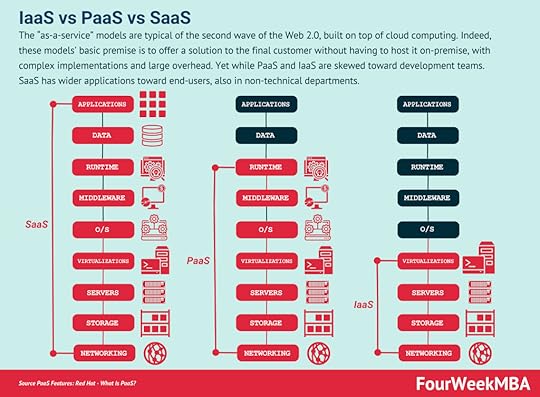 The “as-a-service” models are typical of the second wave of the Web 2.0, built on top of cloud computing. Indeed, these models’ basic premise is to offer a solution to the final customer without having to host it on-premise, with complex implementations and large overhead. Yet while PaaS and IaaS are skewed toward development teams. SaaS has wider applications toward end-users, also in non-technical departments.
The “as-a-service” models are typical of the second wave of the Web 2.0, built on top of cloud computing. Indeed, these models’ basic premise is to offer a solution to the final customer without having to host it on-premise, with complex implementations and large overhead. Yet while PaaS and IaaS are skewed toward development teams. SaaS has wider applications toward end-users, also in non-technical departments. Cloud computing is composed of the following services:
Software-as-a-service (SaaS)
SaaS refers to the license to apply the services offered by software applications. An example of this is Microsoft 365, or the entirety of Microsoft applications in a single cloud. There are different payment models for SaaS cloud computing services, depending on the product. Often, it is large enterprises that obtain these licenses.
Infrastructure-as-a-service (IaaS)
IaaS yields the delivery of products and services through servers. Products, including operating systems and data, get stored through IP-based connectivity as part of an on-demand service. IaaS uses programs like IBM Cloud and Microsoft Azure. Instead of purchasing software, users can procure them as an on-demand service.
Platform-as-a-service (PaaS)
PaaS is often used interchangeably with SaaS. The main difference between the two is that the platform for establishing software gets delivered through the internet. Popular platforms that offer PaaS include Salesforce.com and Heroku.
Benefits of Cloud Computing to Digital Entrepreneurs
Cloud computing provides a plethora of benefits to different sectors of businesses. From the ability to manage software from any device on a native app or web browsers, users can handle data seamlessly. It is the foundation of a reliable IT infrastructure that aims to support business growth.
To better understand why more businesses are moving to the cloud, here are the benefits of cloud computing:
Scalability
Digital entrepreneurs and businesses that invest in cloud computing can take advantage of its efficiency and flexibility. Cloud-based services let companies use unlimited bandwidth and storage space, promoting scalability. Scalability means that companies can scale up and down, depending on their capacities and goals. Scalability in business plays a fundamental role in coping when traffic increases or fluctuates.
Simply put, playing your data in the cloud eliminates the need for the installation of programs on-site. On top of that, enterprises can update their software remotely, without the entire IT workforce present. Not only does it promote workforce flexibility but also convenience. Several uses can access applications and data anywhere and any time, as long as they have internet connectivity.
Reliability
A robust infrastructure supported by cloud computing means that businesses can rely on the cloud in case of issues that arise. Cloud-based services offer reliable disaster recovery and comprehensive back-up in the event of a system breach, malfunction, or cyber threat. It gives digital entrepreneurs peace of mind that they can recover data within a few hours. Cloud computing mirrors data across servers from the beginning to instantly provide back-up solutions, minimizing downtime.
Cost-Effective
One of the most valuable benefits of cloud computing is getting a lot of bang for your buck. It reduces IT operational costs with remote servers used for storage. Instead of gathering an in-house team to install applications and situate storage segments, you can simply leverage the cloud. From the overhead expenses, management efforts, and constant software upgrades, cloud computing does it all at a fraction of the price. Most cloud-based services are cost-effective and on a pay-per-use basis. This model means that businesses can obtain only the services they need at a given time.
Initiate Steadfast Collaboration
The cloud environment aims to initiate true collaboration across business sectors. Different departments can access, modify, and manage the same files without having to be in one room. Such a transparent form of collaboration eliminates the communication and geographical barriers since both parties can work with data as long as they have internet. With a true collaboration across teams, timeframes and scheduling is a much smaller issue.
Accelerate Business Growth
Cloud computing is applied to meet the ever-changing market demands and technological advancements. It is integrated into an existing framework to accelerate business growth. With increased storage space and bandwidth, webpages can handle considerable traction and anticipate traffic. The seamless deployment of the cloud makes it easier for digital entrepreneurs to grow. They can match their business operations with the growing IT requirements while maintaining optimum performance.
Automatic Software Updates and Integration
Cloud-based services feature regular software updates to meet the ever-changing IT demands. Constant monitoring is performed across cloud servers to make sure that systems are secured and safe. Instead of relying on your internal IT team, you can delegate the task to a cloud computing specialist. They are also the ones tasked to integrate software across cloud servers. Although it can occur automatically, professionals can modify software applications suitable for their business objectives.
Sustainability
Businesses are now taking the initiative of maintaining sustainability. One way to do so is through cloud computing. Cloud computing does not require much hardware equipment in the office. Cloud-based services reduce as much carbon footprint as possible, considering that they are remote. Data, applications, and servers can be stored and run in a virtual environment, meaning less energy consumption.
Read Next: Cloud Business Models, IaaS, PaaS, SaaS, AI Economy, C3.ai Business Model, Enterprise AI Business Model.
Main Guides:
Business ModelsBusiness StrategyMarketing StrategyBusiness Model InnovationPlatform Business ModelsNetwork Effects In A NutshellDigital Business Models
The post Cloud Computing And Why It Matters In Business appeared first on FourWeekMBA.
December 11, 2020
How to Write a Lead

The lead is almost as important as the headline, and you need to make it compelling and attractive to keep your readers attached. Your lead should spice up the remainder of your copy and make it look irresistible. Your lead is like a mini-headline directly addressing the needs of your audience and getting them to read the second sentence and the third sentence till the end of the article. Like your headline, it must be short and compelling, making the content easy to digest.
Your lead is the beginning of a chain of sentences that will link each sentence to the next till the end of the copy, ensuring your readers don’t lose interest at any point. The best way to do this is to ensure that you don’t deviate from the message and ensure that your content is about what you have put in your headline; you don’t want to make it seem like a waste of time.
Writing A Compelling Lead
I have covered the importance of a killer lead or opening sentence, as you may want to regard it. Writing a compelling lead entails one key ingredient: keeping a conversation in your reader’s mind. You don’t just want to talk, talk, talk, and keep talking. You want the reader to read what you have to say and give a response in his mind; although you don’t even know who is reading, you are in his mind conversing with him.
Look at these two opening sentences A and B for a hotel copy, and let us be the judge of the more interactive lead.
A: “Our services ensure that you get the most comfortable stay away from your abode with the most professional services, to ensure that you feel at home…”
B: “Have you ever imagined home away from home? Comfort and peace in a serene environment that makes you contemplate your real place of abode? Imagine yourself in a new home with the best culinary services that you won’t get anywhere else…”
It is evident that lead A is quite attractive and appealing, but lead B gets the reader more interested in the copy, as he is subtly forced to answer questions in his mind, thereby propelling a conversation within him. This is one killer tip of a compelling lead. This conversational start may also be regarded as a hook. Well, for obvious reasons, it keeps your audience hooked to the rest of the content of the copy.
Here are some typical “Hook” templates that you can use in your opening sentences.
“Have you ever heard that…?”“Have you ever imagined enjoying your…without [regular approach]…”“We all know the feeling when… Or don’t you?”“Research has made us discover that…” “For several years, I was unable to… Until I”
Although not all of these Hooks ask a question, all of them will spark a conversation in the reader’s mind because it makes them curious about the ending of what you’re telling them.
You can also use mini-stories to write an opening sentence. Stories are also forms of hooks because they keep the reader engaged, and they keep reading. Although you need to remember that your lead must be short and concise, meaning that you don’t have a lot of room to tell a story. So it would be best if you told them something brief and relevant, not a blockbuster.
Your mini-story has one job, which is complementing the headline. Use the headline as an attention grabber, and draw them in, while you spark their interest. This tactic is called the AIDA strategy.
Attention >>> Interest >>> Desire >>> Action
 AIDA stands for attention, interest, desire, and action. That is a model that is used in marketing to describe the potential journey a customer might go through before purchasing a product or service. The AIDA model helps organizations focus their efforts when optimizing their marketing activities based on the customers’ journeys.
AIDA stands for attention, interest, desire, and action. That is a model that is used in marketing to describe the potential journey a customer might go through before purchasing a product or service. The AIDA model helps organizations focus their efforts when optimizing their marketing activities based on the customers’ journeys. This strategy is usually used to generate conversion for sales. It utilizes the audience’s interests, taking advantage of their thought processes, answering their unasked questions, and overcoming their objections right from the beginning of the copy.
Attention (A): Typically, this is the place where the attention of your audience is drawn, telling them what is in for them and what benefits they can potentially gain. As you can already imagine, the headline is the place to attract this attention. Remember that I told you to capitalize on emotional words and make irresistible offers to your audience. This grabs their attention, and you can move to create interest.
Interest (I): At this point, you can now apply the mini-stories we’re talking about in the lead; after gaining the necessary attention, then you will use these short stories to make your reader more interested in what you have to offer.
Remember, the goal is to grab their interest, so the stories must be short so that you won’t lose them at any point along the line. So from there, you can take it to the desire and then the action.
As we proceed, we will talk about the Desire and Action, the “DA” of the “AIDA” strategy.
The summary of the opening sentence is, to begin with, a conversational opener, which sparks a conversation in your reader’s head. Keep these sentences or stories short, and appeal to their interests firmly.
Benefits
After you have been able to get your audience’s attention with a compelling headline, and you have been able to get them interested in the unique thing you have to offer, it would be best if you talked about the benefits. Do not make the mistake of assuming your benefits are clear enough from your headline, lead, or your unique value proposition. You need to spell out the benefits for them in a short summarized form, preferably in a bulleted format. The services you offer and your unique value proposition are part of your benefits, but you need to make them know that they are benefits. Do not assume for your audience.
Your lead could go thus: “Have you ever imagined home away from home? Comfort and peace in a serene environment that makes you contemplate your real place of abode? Imagine yourself in a new home with the best culinary services that you won’t get anywhere else…”
However, you can list out a couple of benefits here in a bulleted point to reiterate your points and to also make it more transparent,
A list of benefits based on that lead would be:
You will enjoy a cool, serene environment with the best outdoor relaxation servicesYou will have access to a wide range of continental dishes and classic cocktailsYou will enjoy great hospitality, as our staff are seasoned and well trained for your comfort
Now, these were all mentioned in the lead, but the benefits section made it more explicit. More so, it reiterates these features and makes them appear as benefits rather than mere features. When your audience sees features as benefits, it converts them into customers more efficiently.
Remember to use bulleted points to highlight benefits; that way, the reader can digest each of the benefits one at a time. Keep it short, with fewer full stops and semicolons to ensure that the reader digests the content at once.
There are two major types of bullets used in copywriting: Blind bullets and Open Bullets.
Blind Bullets gives readers clear information about the benefits they stand to gain from the product or service, but it doesn’t tell them how. This deliberate concealing of little information keeps the reader curious to see how he will enjoy these benefits. Open Bullets, on the other hand, give all the details available at once, starting like a blind bullet by telling them the benefits but ending the sentence with how the reader will access these benefits.
Both bullet styles can be used in copywriting, as they both work. They may even be mixed at times to make sure that your copy is very engaging.
After your audience has seen what they have to gain and are already convinced, you can make this happen. Then you are at the last stage of the AIDA strategy, which is the action stage.
ACTION: You have said all you need to; you have been able to hook your reader with a solid lead and drive them down to the point of taking action. Don’t forget your clear CTA. It would be a waste of effort to walk an audience down to the end of a journey without asking them to do anything. Like I said in the first chapter, have one clear CTA, just one! It could be buying a product, ordering a service, making a subscription, and many more. But always ensure that your copy has a clear CTA to ensure that all your hard work and effort will not go down the drain.
When writing your copy, write active sentences, using more verbs than adjectives. Verbs show action, and the reader imagines something very active, unlike adjectives that seem very passive. More importantly, write in the active sense than in the passive.
It is also important to ensure that your copy is easy to read. Make your points and transit from your lead to your UVP to benefits without making it look herculean to read. Ensure you check your copy over and again. If possible, ask someone else to check for you and read aloud.
It would be best if you also remembered to focus your copy on what it can do rather than what it is. That is the primary key to a good copy structure. Tell your readers what your product or service can do differently; nobody is interested in your history.
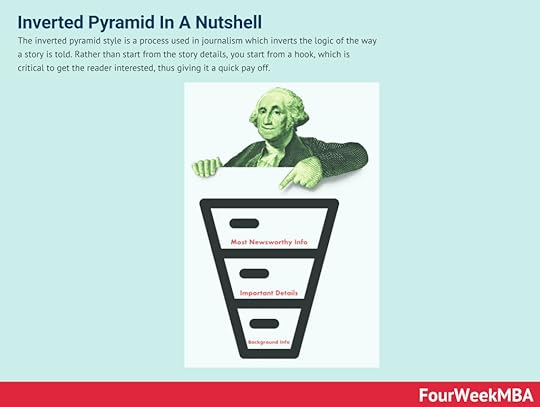 The inverted pyramid style is a process used in journalism that inverts the logic of the way a story is told. Rather than start from the story details, you start from a hook, which is critical to get the reader interested, thus giving it a quick pay off.
The inverted pyramid style is a process used in journalism that inverts the logic of the way a story is told. Rather than start from the story details, you start from a hook, which is critical to get the reader interested, thus giving it a quick pay off.Read Next: How To Write An Headline, Copywriting Examples, Unique Value Proposition, Business Writing, Copywriting, Email Marketing, SEO, Social Media Marketing, Content Marketing.
Main Guides:
Business ModelsBusiness StrategyMarketing StrategyBusiness Model InnovationPlatform Business ModelsNetwork Effects In A NutshellDigital Business Models
The post How to Write a Lead appeared first on FourWeekMBA.
How To Write An Headline That Converts

Copy must be designed to get the reader’s attention from the first word in the first line till the end of the copy, keeping your audience engaged and transfixed on the copy till he absorbs the message, gets convinced, and take the necessary action.
The message must be clear, short, and concise to enable easy communication. Like I said, excessively lengthy texts will only bore out the reader rather than impress them. You are not writing a paper for your college professor. In this chapter, I will thoroughly explain the perfect structure to go about writing your copy.
The Headline
Your headline is the most important part of your copy, no matter what you are writing for. Even if it is a video, it is the headline that will determine if the audience will be inspired to watch or not. Your headline is similar to seeing a beautiful lady or a handsome guy; you already like what you see before talking to this person.
However, you may eventually have a conversation with the person and realize that he/she isn’t a fit for you. But if you meet a stranger looking rough and tattered, even if he has the highest IQ in existence, you won’t bother to find out because the person’s outlook isn’t a pleasant one. This is the same effect that your headline has on your copy. If it isn’t catchy or attractive, no matter how detailed and rich the body is, very few people will read that.
The 80/20 rule is fundamental, as it reminds us to focus the bulk of our energy on our headlines. If we can get 80% of the audience to read the first 20% of the copy, they will most likely read the remaining 80% of the article. “Put in more efforts to your headlines, sub-headers, and your introductory phrases – which is usually the smallest part of your copy” If you can get them to read the first 20%, then they will most likely read the remaining 80% of the content.
A poorly written headline could throw your entire copy in the bin, your potential customer is ready to spend, but if he doesn’t get convinced by your headline, he will definitely spend his money – although not with your business. If you employ a copywriter who charges you $100 for a copy. Ensure your headline is worth $80, based on the 80/20 rule; because that is where the majority of the value of a copy lies.
There are many tips on creating a highly converting headline, but I will outline a few in this guide. They are:
Be Specific
You do not need to beat about the bush. Your headline should be specific; let them know what they are signing up for in a simple sentence. Hit the nail on the head, and make it as short as possible. After reading your headline, your audience should have a clear expectation of what to expect. You can utilize numbers. This forces your content to be very specific and looks sure of your offering. This confidence is passed on to your audience, and they are inclined to get interested in your offer.
Capitalize On Emotional Words
Emotional words in copy headlines pass on the emotions in your text to your readers’ brain. Your audience will typically read your words in their minds, unconsciously emphasizing these emotional words. If you are a travel agency and you want to write a blog post as a content driver, say you want to write about the best honeymoon locations around the world. You could go: “10 AMAZING Honeymoon Destinations That You’ve Never Heard Of.” This is quite a catchy topic for a potential traveler as it lets the reader understand your emotions that these places are amazing. Eventually, the reader may open the blog post and discover that he has heard of them before, but you have gotten him to open your post. You probably even included a few CTAs that give him information on the cheapest available flight tickets; this could make your reader a subscriber to your newsletter. Whenever he decides to travel, I can bet you’ll be the first agency on his wish list as you have already created a bond with him using your copy – and it all starts from the headline. Apart from “Amazing,” there are a thousand emotional words to use in headlines. Moderation is essential, so it is very OK to use just one per headline.
Fear Of Missing Out (FOMO)
You can utilize the application of FOMO to your headline strategy, although only at strategic times. You need to ensure that the product is one that is in high demand. You may introduce a price slash and make people rush the product because you have ensured to let them know that there is a limited amount of stock available. Nobody wants to miss out on the bumper deals, so they will be inclined to buy these products quick before it becomes unavailable. If you sell an online tool, such as a VPN and your premium offer is $9.99 per month, you could announce via social media and to email subscribers that you will be doing a 50% price slash for the first 100 people to subscribe to your VIP package.” Many people probably want the premium package but are unwilling to pay that amount for it. But if they can see that they only need to pay $4.99 for that same value, many people will jump on the offer because they do not want to miss out on the moving train. This headline strategy has worked a lot of times, and because Internet users make a lot of emotional purchase decisions, it will always work.

As you can see from this copy, this website has created a sense of urgency with a very irresistible offer. We only have 9 hours to go, and the audience will gladly accept this offer as it’d be a cheap bargain
Offer Irresistible Benefits To Your Readers
One key strategy for creating specific headlines is offering irresistible benefits to the audience. Your headline should highlight the benefits he will get, how soon he will get it, and a clause to overcome his objections. For example: “Enjoy Unlimited Access To Keyword tools, beat your competitors at their game in a month, 100% money-back guarantee”. This offer is an irresistible offer to your potential customer who may be skeptical about being a premium subscriber to this tool. Still, as soon as he sees the 100% money-back guarantee, he is assured that it will definitely work for him, and if he doesn’t, he will get his money back. In the copy, after the headline, you should list the conditions that will make the money-back guarantee valid, such as “not using any of the premium tools” and many more.
Uniqueness
You should avoid copying the headlines of other people. Remember, your audiences are all over the place, and they know what they have seen before and where they have seen it. Don’t base your copy on plagiarism. Create something unique, and you will grab the attention of your audience.
There are dozens of tips on creating outstanding headlines, but the summary of it all is that you should be able to get the reader curious from the headline such that he will be inspired to read the remainder of the copy. Also, offer clear benefits to your readers, let them know what to take away from reading the headline, and ensure that your benefits are guaranteed to be enjoyed as early as possible.
You may also input your headline into a free headline analyzer, the “American Marketing Institute Headline Analyzer” to determine the strength of your headline.
Read Next: Copywriting Examples, Unique Value Proposition, Business Writing, Copywriting, Email Marketing, SEO, Social Media Marketing, Content Marketing.
Main Guides:
Business ModelsBusiness StrategyMarketing StrategyBusiness Model InnovationPlatform Business ModelsNetwork Effects In A NutshellDigital Business Models
The post How To Write An Headline That Converts appeared first on FourWeekMBA.
Copywriting Examples For Business

There are many strategies for copywriting. Copywriting aims to appeal to your audience’s emotions and get them to take the action you need them to. Feelings and emotions influence many purchase decisions. Psychological strategies can trigger these emotions. Some of them comprise reframing, social proofing, and testing what works, to continuously improve conversion.
Reframing
This is quite a simple psychological strategy that has huge effects on consumers. It is synonymous with calling six chairs “half a dozen chairs” when, in reality, they mean the same thing, although they are interpreted differently in the mind of the reader for different reasons. One popular Reframing method companies do reduce the price of a product by a penny. Rather than call a product $10, they call it $9.99. Of course, the difference is infinitesimal, but consumers have a psychological sense of viewing $9.99 as cheaper than $10. Hence, reducing the amount by a penny or two to call your prices “.99” or “.98” appeals mentally to the user that the item is cheaper.
Crazy right? But it works crazy, too; many stores had reported a significant increase in sales when they reframed their pricing as such. Reframing is a very effective strategy that allows you to manipulate an item’s actual value without telling a lie. Instead, it focuses on the reader’s mentality.
There are other ways by which businesses reframe their products. Many companies would set prices for their annual packages at $480, which may seem to people a huge amount to pay at once. But it looks pretty much more comfortable to pay $40 per month because you have made it look cheaper. Asking the buyer to pay $480 will come with a bit of reluctance, unlike $40, which is quite easily affordable, whereas they are the same thing. Some may even prefer to pay $1.50 every day because it is incredibly cheap and affordable for them.
Therefore, the business known to produce a yearly service subscription of $480 may come up with a newsletter with a headline that says “GREAT NEWS! You can now gain VIP access to our XYZ product for as low as $1.50.” This will make a lot of sense to people, and it will generate a lot of clicks and conversions because it seems “cheaper,” whereas it is more expensive than buying at $480. After all, after 365 days, a daily subscriber would have paid $547.50, $67.50 more than the person who made a one-time yearly subscription at $480. But who cares? You have reframed, and you have made your profits on the Psychological loophole in your audience. 
This website has a weekly and monthly package, but they choose to make their daily option the front of the advert. Looking at it, 8 cents is a super great deal. But in reality, nothing as changed. It’ll, however, help boost conversion
Social Proof
Social proof is another thing that propels the purchase decision of consumers. People want to learn from other people’s mistakes many times; hence, they resort to using social proof when they’re unsure what to do next.
Social proof is handy when a potential customer is on the fence. You have convinced the reader about your unique value and the benefits you offer, but you have not succeeded in overcoming his objections. Hence he needs proof from others. If you sell a product on a third-party platform like Amazon, the easy way your potential customers will get social proof is by combing through your reviews. But in cases where everything happens on your website or domain, you need to include social proof yourself.
Many social media networks and instant messaging apps, dating sites, and the likes utilize social proof to pin down skeptics. They may write on their homepage that “We have 1,002,785 registered users; 347,238 are online now”. This is to convert the skeptic to complete his registration and be a part of their community, and the good news is that it works like magic because the social proof available helps overcome objections. The potential subscriber may be skeptical because it is not a popular dating site yet, but seeing those numbers, he is more than encouraged to join up and even chat with one of the 300,000+ users online.
Many other businesses also include their results and testimonials in their copy. As you often see them leave featured comments and testimonials in a section of their homepages, they pull over to themselves the skeptics on the fence. However, Social proof is paradoxical because you need to have made sales to have evidence to show your audience. If you are a new business owner, ensure that your items are cheap at the start to generate sales. Speak nicely to your customers to leave a written review to select the best of the bunch as your social proof.
If you offer a service rather than a product, you could make the basic service free for a select number of people at the start, and the premium service at a substantial discount, maybe 50%. This will give you a considerable sample space of people to provide testimonials about your service, and boom! Social proof stands.
You could create a list of potential objections; this makes you think ahead of your audience. Create the objections he could probably have before he does and squash them. I call this “The First Attack Approach.” Rather than deceive yourself that you are good to go and there are no objections, identify the objections before your audience, because if you don’t do that, your readers will eventually identify complaints. Your conversion won’t hit its peak. The objections could be “Price,” “Season,” “Personal doubts, i.e., will this work for someone like me,” “I already have a product I am loyal to, and I’m not willing to switch,” and many more. Bring everything up, and remove these concerns by yourself, and you have your customers on lock.
Use Irregular Numbers
Another way of exploiting the mentality of an audience is to use irregular numbers. Irregular numbers are numbers that aren’t round figures.
“50% increase” is a round figure, “100 subscribers” is a round figure. One proven way of exploiting the human mentality from experience is to use irregular numbers, which are more believable than rounded figures. Well, I also agree that it is easier to believe that 978 people subscribed to your premium package offer than when you say 1,000 people. This is because it is quite common to get irregular figures than rounded ones.
As I have mentioned previously, numbers help give specifics, which is very important for a copy, but you should ensure that you use irregular numbers than rounded figures. From the dating site example that I gave in the last subtopic, we can see the use of irregular numbers.
“We have 1,002,785 registered users; 347,238 are online now”. This is a lot more believable than saying, “We have over 1,000,000 registered users; about 350,000 are online now”. Although both statements are correct, one looks more honest than the other. And this loophole is a great one in appealing to the psychology of humans.
Reduce Price Objections: Another psychological approach to convincing your audience is to reduce price objections. This simply means that you want to reassure them that they are not overpaying for a product. You must often have seen a business’ copy that says, “Get Access to this product for a small amount of $5”. You might look within you that it is an unnecessary repetition because it is quite clear that $5 is small. But it doesn’t work that way in copywriting. It would be best to emphasize that the amount you have called is cheap and help them overcome their objections.
A headline example is: “Get lifetime access to eBooks and learning materials on graphics designing at a bargain $59.95” The word bargain removes the price objection from the buyer at this point because, in his mind, bargain signifies to him that if he wants to get that lifetime access, he would be paying much more.
Beyond the headline, in the copy, you could emphasize the cheapness by reminding the user that a monthly fee is $3.49, which means that the reader could have lifetime access to the product, rather than paying $3.49 for 18 months. This sounds like a steal, and it will get the reader inclined to purchase the product.
Testing
After combining knowledge with strategy, the next thing you need to do is to test. There is no rigid or hard and fast rule to copywriting. Test your strategy with different leads, different psychological approaches, and even mix strategies to get your copy’s best possible performance.
This is an example of a headline that has mixed three strategies! “Hurry now, Register with Us And Boost Your Website Impressions by 14%”. This example has added the strategy of urgency and a specific number while using an irregular number. You can even mix more strategies in the content of your copy, depending on your creativity.
Testing will also make you understand what design makes your copy convert better, the emotional words your audience seem to key into, and even the point at which you lose your readers. This can make you tweak and improve your copy till you get the best. It could be strenuous, but once you get a hold of your perfect strategy, you will enjoy the best conversions and better revenue for life.
Read Next: Unique Value Proposition, Business Writing, Copywriting, Email Marketing, SEO, Social Media Marketing, Content Marketing.
Main Guides:
Business ModelsBusiness StrategyMarketing StrategyBusiness Model InnovationPlatform Business ModelsNetwork Effects In A NutshellDigital Business Models
The post Copywriting Examples For Business appeared first on FourWeekMBA.
Unique Value Proposition In A Nutshell
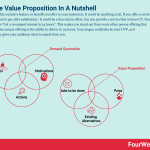
Your UVP is the exclusive feature or benefit you offer to your customers. It could be anything at all. If you offer a service, it could be “100% pay after satisfaction”. It could be a time factor offers. Say you provide a service that reviews CV. Your UVP could be “Get a revamped résumé in 24 hours”. This makes you stand out from every other person offering that service, as your unique offering is the ability to deliver in 24 hours. Your slogan could also be your UVP, as it automatically gives your audience what to expect from you.
The Importance of The UVP
Kroger, one of the biggest grocery stores in the United States, has a clear slogan “Fresh for Everyone” which signifies their unique offering to provide food items and groceries that are fresh. This is also their UVP, and it can be incorporated into the copy quite easily. Therefore you should identify your UVP. Know what you offer or want to offer that others don’t. It could be locally manufactured; it could come with 12-month free support and many more. Just ensure that it is unique.
This brings us back to the AIDA formula. After you have successfully gained attention and have sparked your readers’ interest, highlighting the benefits of your unique offering will appeal to your audience’s desire.
Desire: You have said a lot already, and you have made your UVP clear, so we are at the third stage of the AIDA strategy, which is to attract the greed of your audience by highlighting your benefits and how they will be of importance to them. Although you must have mentioned a few from your headline and your lead, you must make them clear and leave your audience with wet mouths.
Remember to show the benefits
After you have been able to get your audience’s attention with a compelling headline, and you have been able to get them interested in the unique thing you have to offer, it would be best if you talked about the benefits. Do not make the mistake of assuming your benefits are clear enough from your headline, lead, or your unique value proposition. You need to spell out the benefits for them in a short summarized form, preferably in a bulleted format. The services you offer and your unique value proposition are part of your benefits, but you need to make them know that they are benefits. Do not assume for your audience.
Your lead could go thus: “Have you ever imagined home away from home? Comfort and peace in a serene environment that makes you contemplate your real place of abode? Imagine yourself in a new home with the best culinary services that you won’t get anywhere else…”
However, you can list out a couple of benefits here in a bulleted point to reiterate your points and to also make it more transparent,
A list of benefits based on that lead would be
You will enjoy a cool, serene environment with the best outdoor relaxation servicesYou will have access to a wide range of continental dishes and classic cocktailsYou will enjoy great hospitality, as our staff are seasoned and well trained for your comfort
Now, these were all mentioned in the lead, but the benefits section made it more explicit. More so, it reiterates these features and makes them appear as benefits rather than mere features. When your audience sees features as benefits, it converts them into customers more efficiently.
Remember to use bulleted points to highlight benefits; that way, the reader can digest each of the benefits one at a time. Keep it short, with fewer full stops and semicolons to ensure that the reader digests the content at once.
There are two major types of bullets used in copywriting: Blind bullets and Open Bullets.
Blind Bullets gives readers clear information about the benefits they stand to gain from the product or service, but it doesn’t tell them how. This deliberate concealing of little information keeps the reader curious to see how he will enjoy these benefits. Open Bullets, on the other hand, give all the details available at once, starting like a blind bullet by telling them the benefits but ending the sentence with how the reader will access these benefits.
Both bullet styles can be used in copywriting, as they both work. They may even be mixed at times to make sure that your copy is very engaging.
After your audience has seen what they have to gain and are already convinced, you can make this happen. Then you are at the last stage of the AIDA strategy, which is the action stage.
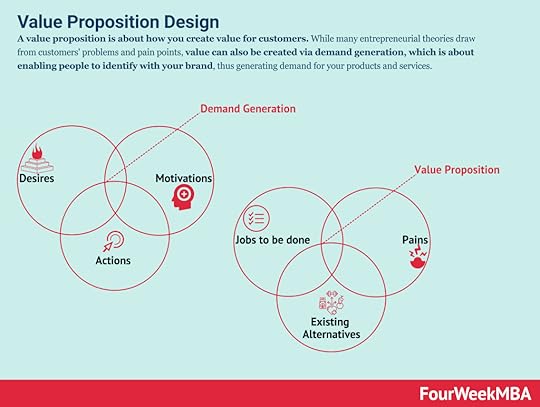 A value proposition is about how you create value for customers. While many entrepreneurial theories draw from customers’ problems and pain points, value can also be created via demand generation, which is about enabling people to identify with your brand, thus generating demand for your products and services.
A value proposition is about how you create value for customers. While many entrepreneurial theories draw from customers’ problems and pain points, value can also be created via demand generation, which is about enabling people to identify with your brand, thus generating demand for your products and services. AIDA stands for attention, interest, desire, and action. That is a model that is used in marketing to describe the potential journey a customer might go through before purchasing a product or service. The AIDA model helps organizations focus their efforts when optimizing their marketing activities based on the customers’ journeys.
AIDA stands for attention, interest, desire, and action. That is a model that is used in marketing to describe the potential journey a customer might go through before purchasing a product or service. The AIDA model helps organizations focus their efforts when optimizing their marketing activities based on the customers’ journeys.  The inverted pyramid style is a process used in journalism that inverts the logic of the way a story is told. Rather than start from the story details, you start from a hook, which is critical to get the reader interested, thus giving it a quick pay off.
The inverted pyramid style is a process used in journalism that inverts the logic of the way a story is told. Rather than start from the story details, you start from a hook, which is critical to get the reader interested, thus giving it a quick pay off.Read Next: Business Writing, Copywriting, Email Marketing, SEO, Social Media Marketing, Content Marketing.
Main Guides:
Business ModelsBusiness StrategyMarketing StrategyBusiness Model InnovationPlatform Business ModelsNetwork Effects In A NutshellDigital Business Models
The post Unique Value Proposition In A Nutshell appeared first on FourWeekMBA.
Business Writing For Beginners
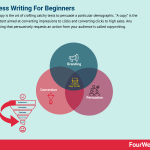
You render your service or sell products to people, and not yourself. So the first thing to do is to understand the demography you are looking to persuade. If your product is an existing product, you need to know many things, including the general public’s perception of your product or service. What they like and what they do not like.
If you have a fashion brand and you discover that people complain about the fact that your clothes are too light and a machine wash will ruin them, you know that you should increase the thickness of your clothes. If your brand’s name is “Michael,” your copy headline on your website homepage can be written as “NEW IMPROVED Michael’s Apparel at the same old price.”
Showing your existing customers that you are giving them an improvement based on their complaints, with the cool option of retaining the old price. Knowing your customers is not limited to knowing what they want or do not want. It also includes your knowledge of what better value they can get elsewhere; hence, competitor analysis. You need to keep all your customers loyal to you. Draw their attention; let them know the best possible thing they are getting elsewhere – in a subtle manner, of course. And from here, you can pitch your offer to them (and no one needs to tell you that it must be better).
A few methods of identifying what your customers want are,
Understand Your Product
This may sound weird as you believe you own your business and know what you make, but you must understand every little detail about your product as though you were the end-user – without manufacturer bias. If you will be outsourcing your business copy to someone else, ensure you understand your products so that you can communicate properly.
This is very typical with tangible goods because services cannot be rendered to one’s self. Using your product is an excellent way to understand your product. You will see your product from the lens of a consumer and not a producer. Hence, you can identify flaws, where it lacks, and what gives your competitor an advantage. As a copywriter, you hold the responsibility to erase these fears from your customers and provide a practical solution to how your offering solves these problems. Also, combine this with the knowledge you have gathered from your customer survey, and you will be able to write a copy that speaks to your audience.
Social media interactions
Consumers tend to show their displeasure in things from their interactions on social media, in discussion threads, in comparisons, and other critical ways. Unlike Instagram, which showcases products in the most graphical forms, and Facebook, which is more concentric on pictures than words. Reddit and Twitter are very critical platforms with various threads of discussions, and they are very useful platforms to judge your customers’ satisfaction or displeasure.
There is a Reddit thread for almost any topic. If your brand is well known, you will definitely have a few threads dedicated to your products. But if your brand is relatively unknown, then you may use general terms that apply to your brand to see what people are saying about the category where you fall, and you may be lucky to see a person that mentions your brand name in his/her comment, and there will be a couple of replies which will either be in disagreement with the comment or Corroborate it.
On Reddit you can sort replies by “Old”, “New”, “Top”, “Controversial”, “Best”, “Q&A”
As their name implies, you can see the most recent comments, the older comments via the old and new buttons. You can also sort to Q&A, which means “Question and Answer” to see comments that are conversational. There is usually a right balance of praise and criticism in these comments sorted as Q&A because these comments are from people who want to discuss their experiences without actively praising or criticizing. Take some time to read out these comments, and you will have a thing or two to take home.
The “controversial” comments are one you should pay attention to. They are laced with all manner of criticism, and while some are unfounded, some are genuine. You should note frequent complaints and be prepared to work on them. When your next content addresses it, it will spark a high conversion.
The “Best” comments are usually full of praise for your product or service. Although you already know the value you offer, you should check out these comments. There might be a couple of minor things that you ignore that might have caught your customers’ attention, and it will be wise to improve on these things. Announcing an improvement in a minor feature will attract attention from your existing audience.
Twitter is relatively easier to navigate than Reddit. However, Twitter users are just as blunt and honest with their opinions as Reddit users. You can find out what people are saying about your brand and your products by a simple search. Search for your brand and product in the search box and navigate tweets and replies to see what people have said. Dedicate time to do this, and you will see many things people have been saying about you. Search for your products in different ways. SONY is a brand, and the PlayStation (PS) a product. I can search for “Sony,” “PS5”, “PlayStation,” “Play Station,” and other ways people may address your product – Not everyone will spell it correctly, so search with different terms.
Like I explained for Reddit, locate the criticism, and the higher its frequency, the more serious you should consider it.
Amazon Reviews
Amazon is the largest online marketplace in the world, with millions of users. The interesting thing about these users doesn’t hold back, and they dish out praise or criticism in a well-detailed manner. If you sell products on Amazon, then it is a good place to analyze your product copy reviews. Using the same formula as you did for Reddit and Twitter, Identify your most common criticism and work towards changing it.
Search for your product on Amazon and if you have gotten any reviews. Check what people are saying. Click on the stars, and it takes you to the review page, where it analyses your percentage of reviews from 5 stars to 1 star. It is advisable to do this on your computer or a desktop version of your mobile browser.
An example of a product is given below. This manufacturer produces earbuds, and while having many positive reviews, there were many negative ones. Although one common for all was that “right ear just stopped working.”


The product has almost 90% positive reviews, but there are
a few negative reviews, less than 10% of the total feedback.
This is one of the reviews that talk about the right earbud that stopped working.

This is another review that talks about the same issue of the right-sided earbud, and there are a few more reviews that had this same complaint.
You may address this issue with your copy. Imagine coming up with a video ad that starts with a person using those earbuds while experiencing difficulty with one ear? It shows that you have paid attention to your product’s faults and have made an improvement; your existing users will be very interested in what new thing you have to offer. Your script in the video may be based on showing off all the prevalent faults in the old model and showing an improvement in a newer model, and you will get your users on your side again.
Apart from your old users, new customers need a lot of convincing to buy a product. Therefore you need to ensure that you address their potential fears about the product, even before they mention it, and when they can no longer think of any concern, they are inclined to purchase.
Customer Surveys
Customer surveys are usually helpful in judging your product’s position, and it is a pointer at what you should improve or what new product you should make. It is also a tool in writing a copy that will speak directly to your audience based on what they want.
When you conduct surveys, ask specific questions, they are probably busy and need to get other things done, but have decided to spare two to three minutes to give you feedback. Hence, be direct.
“Thank you for choosing our product. What particular features made you prefer this product?”“How did you discover our product?” – Give a multiple-choice here for ease of answering. As I said, the customer has limited time to spare.
From a friend or familyFrom online recommendationsFrom social media adsFrom personal researchOther (specify)
“Compared to the products of other brands you have used before, how would you recommend this product.”
Strongly RecommendRecommendUndecidedDo not recommendStrongly do not recommend
Give an option for them to state their reasons above if they want to.
“What do you think can be improved in this model.”
These questions and more you may construct yourself will summarize what the customer has in mind about the product. From a statistical conclusion after the survey, you should discover the most frequent complaints and fix them. Remember that it’s not only your customers that see your reviews, potential buyers also see reviews, and if they are not satisfied, they will not be inclined to purchase. Make them feel at ease.
Customer Interviews
Customer interviews are magical; you may schedule an interview session with a select few of your customers over the phone. You can strike a balance by choosing to call very frequent customers, as they have used your products well and have a ton of experience with it. Or one-time customers – who probably didn’t return because they didn’t have the best possible experience.
Hence, you have an idea about what people like and what useful qualities you can make better and bad features that have chased one-time customers away.
Customer interviews help you get the tone at which your customer is speaking. You can also attain a deeper reach if a customer obliges an interview. Questions answered will lead to further questions, even outside your scope, that will broaden your horizon and make you see why you need to fix certain things.
Employee Interviews
You should also relate to your employees and have a great relationship with them. They go out and see things that you do not see. They use products from other companies, and they may have some ideas about what you should add or remove from your products. It is crucial to have a solid relationship with your employees so that they will always relay truthful information to you about your products and not give you a false view to boost your ego.
Analyze Analytics
If you have been running ads before on social media especially. It would be best if you took the time to look at the numbers. This will give you an insight into what you have been doing right or wrong. Posts that people can easily relate to (which is the goal of copywriting) usually get more engagements, impressions, and interactions, unlike posts that they cannot relate to. So check out the campaigns that have been doing decent numbers, look at the copy’s content, and use it as a benchmark for your future copies. However, you should always ensure that you improve on whatever is already done as a stereotype may quickly get boring to people. You should also analyze your past sales of different products with respect to the reviews and the advertisements. This will give you an insight into what people love and what they do not fancy.
In all, you need to conduct well-grounded research about your products. Put yourself in the buyer’s position, and you will understand their grievances and help you make a better product for them.
It is worthy to note that you cannot make a better copy if your product stays the same way. You need to improve your product first before working on improving your copy. You will fast gain the reputation of a scandalous and lying business if you improve your copy by promising to do a couple of new things, and you fail to accomplish them.
Monitor Your Competition
You must know what your competitors are up to, the strategies they are using to infiltrate the market, and what they offer customers that make them stand out. That is not the only reason businesses monitor their competition anyway; as much as you want to know what they are doing right, you also want to know what they are doing wrong. If you can leverage what they are doing wrong and provide a better alternative, you will win over some customers to your business.
In monitoring your competition, there are many things you need to note. A few of them are:
Keywords
Keyword monitoring will help you identify your competitors’ terms in their social media campaigns and other content created on their blogs. You can monitor your competitors’ progress on search engines like Google, Bing, and yahoo; you can also monitor their social media keywords to know the words they use on their e-flyers that gain so much attention. Some keyword monitoring tools will give you the opportunity to identify the rankings of yourself with respect to your competitor daily, thereby monitoring your progress and that of other competitors. You will see some of your competitors moving up the rankings quite rapidly – indicating that they are doing something right. Pay attention to their keywords, and you will identify what they say that appeals so much to the audience in your niche.
There are many tools for keyword search and keyword monitoring. Some are free, some are cheap, and some are quite expensive. But keyword monitoring usually brings results as it will definitely improve the content of your copy. Some examples of keyword search tools are SEMRush, KeywordCompetitor, KeywordSpy, iSpionage, and many more.
Backlink Influence
A backlink, in simple terms, is a link to your website from another website. They greatly influence website rankings in search engines, making them have an easier route to customers. After all, if people can’t see your content, how will they relate to it? Therefore you need to judge how many backlinks your competitors get, as well as the backlinks you get. Assuming I give a product description in this article and give an Amazon link to purchase it, Amazon will have a new backlink from m\y website. Backlinks amplify your well-written keywords by making your website rank high in search results. Backlink tools can give you information on external links and anchor texts (an anchor text has a hidden URL, where you can click to visit another page). So you will be able to identify the exact content that is driving a lot of backlinks. Then you can focus on content like this and ensure that they are ever-present in your copy. Tools that you can use to check link popularity include Majestic Site Explorer and UberSuggest. Both free initially with the option to go premium at reasonable amounts.
Advertisements
In my experience, I have discovered that different content works for different demographics. It will be unwise to blindly move into creating content for marketing purposes without adequate research about what will be appropriate for the audience. Monitoring your competitors’ advertisement strategy is a very effective way to market research for advertisements. Advertisement monitoring tools can help you identify all the ads that your competitors are using; they also offer the incentive of testing multiple iterations of their ad copy to see if the ad is performing at its optimal capacity. Manually doing this can be very tedious, so these tools offer a great route to do this. Some tools even allow you to monitor ads for a certain number of competitors, and in your research, you may even discover new competitors. Your competitors are one of the easiest ways to learn the ropes, so you should continuously monitor them to see what they are doing. Some tools for monitoring Ads are AdBeat, AdGooroo, and many more.
Web Ranking
Many tools will help you identify how well people interact with your competitors’ websites showing ranks and relative ranks, hence giving you a list of competitors to steal ideas from. Many tools enable this, but you will need to splash the cash to get a full in-depth analysis on this. Some of these tools are Alexa, Compete, and SimilarWeb. They provide a wide range of data highlighting website interaction, an excellent pointer at online consumer discretion.
Social Media Monitoring
Social media monitoring has one straightforward aim: to monitor what people are saying about your competitors and what they are saying about your brand online, as explained in subsections above. Although manually doing it will produce better results, it can be very tedious and time-consuming, depriving you of the time you need to focus on other parts of your business. But there are many tools online with cheap access fee that you can use to monitor your competitors’ mentions.
You can get information on their follower demography, and you can get real-time alerts of searches on social media apps. You can even monitor your engagement rates or that of your competition with simple third-party apps, and you can as well have real-time alerts of news, blog posts, podcasts, videos, and forums that talk about your competitors. All these will give you an insight into what you should do, what you shouldn’t do, the audience to target, and the keywords to use in targeting them.
Read Next: Copywriting, Content Writing, Email Marketing, SEO, Social Media Marketing, Content Marketing.
Main Guides:
Business ModelsBusiness StrategyMarketing StrategyBusiness Model InnovationPlatform Business ModelsNetwork Effects In A NutshellDigital Business Models
The post Business Writing For Beginners appeared first on FourWeekMBA.
Content Writing: 5 Must-Haves
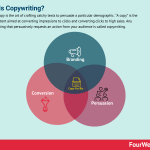
To persuade your audience and appeal to their emotions to get them to complete the needed action, it’s critical to have a great headline, use short stories, have a unique offering, always anticipate, and be willing to take a risk. This is how you will get your audience engaged with your content and message, thereby driving engagement and conversion.
The Headline
Remember the 80/20 rule? Yes, it comes into play here. Your headline is the first thing that your audience sees before the rest of your content. It is synonymous with an entrance to a room. No matter how big a room is, the door is usually very small. But you cannot access the room without the entrance. If your headline is poor or cliché, it will appear to your audience like a broken doorknob, and they won’t be interested in reading the rest of what you have to say.
Utilize buzzwords, figures, facts, numbers, and every other thing that can make them curious about what you have to say in the rest of the copy. Also, ensure that your headline text has a different format from the body. It should be BOLD AND CLEAR, making it stand out from the remainder of the text for easy identification.
Use Short stories
You must convey your message in a relatable way to your audience. You want to present a product or a service to them, so tell a story that portrays their need and how your product or service will meet that need or solve that problem. A great story will not only highlight the importance of your product/service, but it will keep your audience glued till the end. However, ensure that your stories are short and concise. If your product is one that has a lot of technical terms, then a story is great. That way, you avoid the use of technical and professional terms that will rather confuse your audience. You understand your technicalities, but they don’t, so write them a story that they will understand and easily relate to.
Have A Unique Offering
Your audience has seen various digital ads, even more than you can imagine. So it will be unwise to do what everybody else is doing. People love trends, but people love pacesetters even more. So rather than copying the approach of others. You should be able to create your forte, stand out from among your competitors, and show your distinctiveness.
Uniqueness isn’t limited to your writing style. It is also essential for your products and services. Take a market survey and look at what everybody is doing; while you’re at it, take another look at what nobody is doing. Be a pacesetter and offer something unique; let your audience know why your product should be used rather than your competitors’. Convince them about your unique offering, and their emotional appeal to purchase will be shunted towards you.
Always anticipate
We have highlighted the importance of setting trends rather than going cliché. But it is important to understand that you cannot set trends if you are not a visionary. Before Twitter, there were few social media apps in existence, but most of these apps were centered on Desktop use. Twitter came and focused majorly on mobile platforms. Making it an on-the-go app. According to twitter’s blog, they say, “We like to say that Twitter was born mobile. After all, the 140 character limit of Tweets was based on text messaging or SMS constraints. That means our platform was actually designed to allow anyone, anywhere to read, write and share Tweets”. Now today, all social media applications are mostly used on mobile rather than desktop. Being mindful of technological advancements, environmental changes, demand and supply, and other factors will allow you to identify what to do differently to make a difference. In 2006, the Unique Value proposition of twitter would most likely have centered on the fact that you can tweet on-the-go. You don’t have to get home first, improving the social media experience of people.
Be Willing To Take A Risk
To do something different from others, you must be willing to take a risk. Shake up things proactively, create market instability, and your idea will be the go-to thing very soon. All outstanding copywriters take risks to go against the norm, and they have reaped the dividends.
Read Next: Copywriting, Email Marketing, SEO, Social Media Marketing, Content Marketing.
Main Guides:
Business ModelsBusiness StrategyMarketing StrategyBusiness Model InnovationPlatform Business ModelsNetwork Effects In A NutshellDigital Business Models
The post Content Writing: 5 Must-Haves appeared first on FourWeekMBA.



